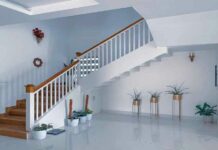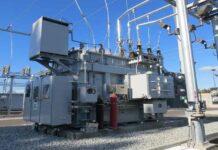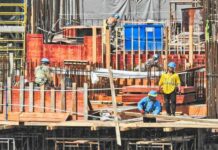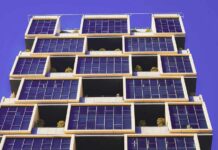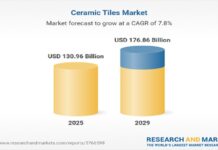In response to increasing environmental impacts and the necessity to lessen the construction industry’s ecological footprint, light-building techniques are becoming increasingly popular. This shift signifies a deliberate effort to harmonize construction’s traditional needs with sustainability principles. Light building encompasses methods such as wood construction, light gauge steel framing, and innovative concrete blends, all of which are more eco-friendly. These approaches prioritize resource efficiency, faster construction times, and greater design flexibility, signaling a new era in architecture. This introduction sets the stage for a comprehensive exploration of light building’s advantages and regional dynamics. It is essential to understand why societies are emphasizing environmental stewardship and its implications. This perspective allows for an examination of light construction’s benefits, limitations, and evolving acceptance across diverse geographical areas.
Light construction employs lightweight materials like wood, metal, and specially formulated concrete for frame building. Unlike traditional methods that use dense, resource-intensive materials, light construction focuses on sustainability and efficiency. This approach conserves natural resources and significantly reduces the carbon footprint of buildings, thereby combating climate change. Light construction benefits the environment by minimizing the use of natural resources and lowering carbon emissions. Sustainable wood, for instance, sequesters carbon, while recycled concrete reduces environmental impact. Mitigating climate change necessitates reducing carbon footprints, and wood captures carbon dioxide from the atmosphere as long as the structure remains intact. Light construction utilizes prefabricated components to expedite projects and reduce labor costs. In urban environments with limited time and space for construction, this efficiency gain is particularly valuable. Light construction technologies cut down on construction time and costs. Prefabricated modules can be assembled on-site after being manufactured in a factory, reducing disruption and construction time. These building techniques offer creative architectural solutions that can be easily modified or expanded. Light construction is suitable for various applications, from residential buildings to commercial complexes, making it highly versatile. Its adaptability to future modifications and expansions is one of the key advantages of light construction. This flexibility is especially beneficial in dynamic urban settings where building functions may change over time.
Innovative Methods and Eco-Friendly Materials
Sustainable timber provides excellent thermal insulation and is easy to transport and install. Innovations like cross-laminated timber (CLT) are as strong as concrete and steel, making them suitable for large structures. Prefabricated timber panels and frames are popular due to their ease of installation and transportation. CLT has revolutionized wood construction, allowing for taller and more complex buildings than traditional wood framing. Light Gauge Steel Framing (LGSF) structures are recyclable and resistant to pests, rot, and fire. Precision in steel frame production reduces waste and improves quality. This eco-friendly and durable alternative to traditional building materials is ideal for earthquake-prone regions. LGSF’s lightweight nature makes it easier to transport and handle on-site compared to heavier materials. New concrete mixtures incorporate recyclable elements and industrial byproducts to reduce weight while maintaining strength. These eco-friendly formulations lower the carbon footprint of concrete production. Lightweight concrete, both environmentally friendly and structurally efficient, is widely used in light construction. Concrete mixes containing fly ash and slag repurpose industrial waste and reduce the energy-intensive process of cement manufacturing.
Global Trends and Regional Practices
Local material availability, professional training, and environmental attitudes shape light-building practices worldwide. Europe, particularly Austria and Sweden, leads in sustainable construction with widespread CLT usage. The region’s stringent environmental regulations and green building practices drive this trend. Government incentives and policies in these countries make sustainable materials more affordable for light construction. In North America, especially in earthquake-prone areas, LGSF is prevalent due to its durability. Consumers in the US and Canada favor the speed and efficiency of prefabricated components. The region’s robust steel recycling infrastructure further enhances the sustainability of LGSF. Rapid urbanization fuels the demand for fast and efficient light construction in Asia. Prefabricated components are advantageous in densely populated areas with limited space and time. Governments in Japan and China are investing in light construction to accommodate population growth. These regions require swift building solutions to keep pace with urban expansion.
Overcoming Challenges and Embracing Opportunities
Despite its advantages, light construction faces challenges like higher material costs and regulatory hurdles. Although CLT and steel may have higher initial costs, savings in labor, time, and energy can offset these expenses. Communicating these long-term benefits to stakeholders is crucial for wider adoption. Regulations add another layer of complexity. Building codes in some regions may not accommodate light construction, necessitating updates to enable broader use. Outdated codes might not recognize the structural capabilities of modern materials like CLT, limiting their application. Advocacy and collaboration with policymakers can address these challenges. The future of light construction is promising, thanks to ongoing material and process innovations. As environmental concerns and the demand for sustainable building practices grow, light construction will become integral to the industry. Continued research will yield more sustainable and efficient materials, and increased education on the benefits of light construction will enhance its global acceptance.
Summary
Light construction advances building principles and supports global environmental goals. It offers flexibility, efficiency, and a reduced environmental impact, making it a compelling alternative to traditional building methods. As more regions adopt these techniques and technologies, light construction will help the construction industry become more sustainable. Addressing initial cost and regulatory concerns is essential for increasing adoption. New case studies and success stories demonstrating the long-term benefits and feasibility of light-building initiatives can build stakeholder confidence. Technological and material advancements should eventually lower the cost barrier. Ultimately, light construction will underpin modern, environmentally responsible building practices. It paves the way for future innovations in construction technology, enabling the development of more sustainable and energy-efficient buildings. Moreover, the integration of renewable energy systems and smart building technologies within light construction frameworks further enhances their sustainability and efficiency. This holistic approach not only meets current environmental standards but also anticipates future advancements in green building practices.




